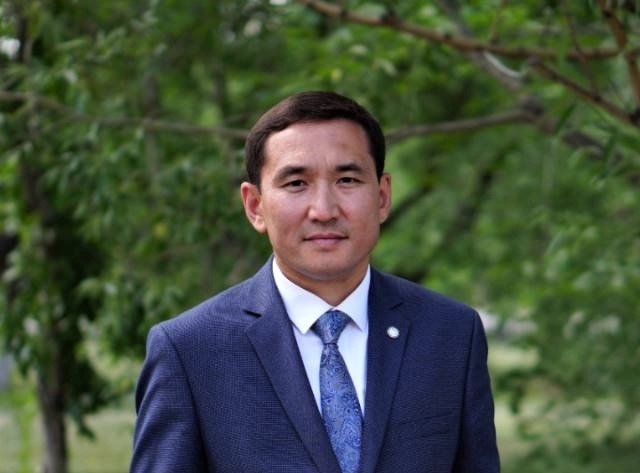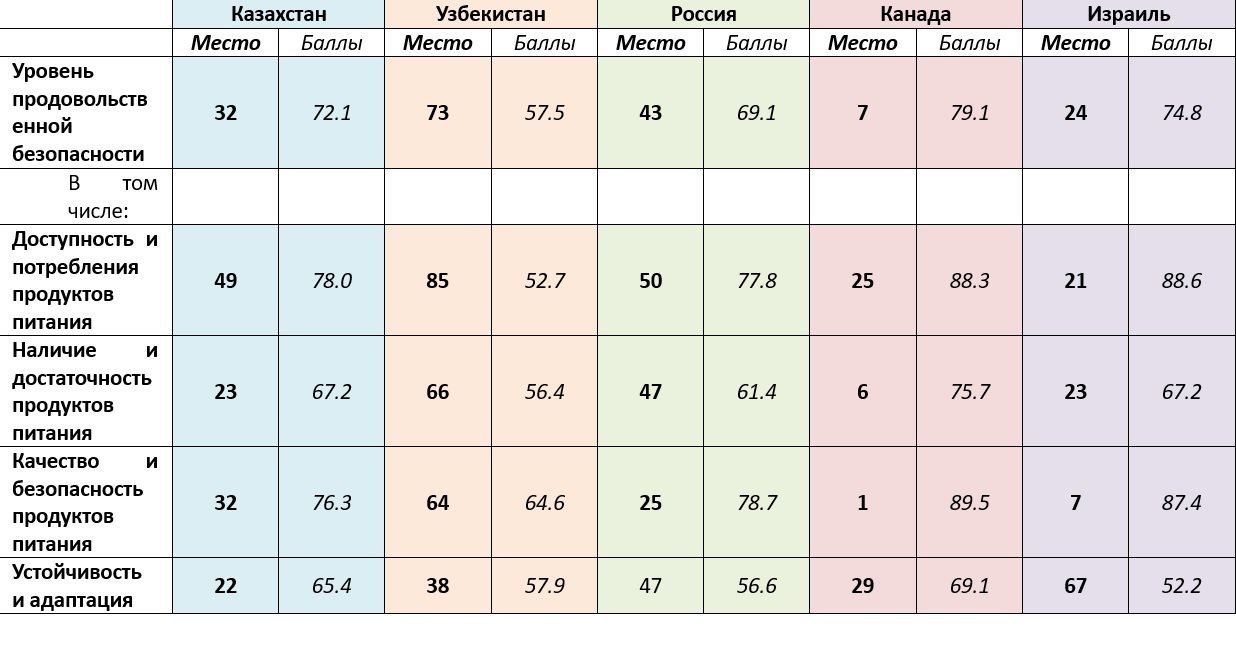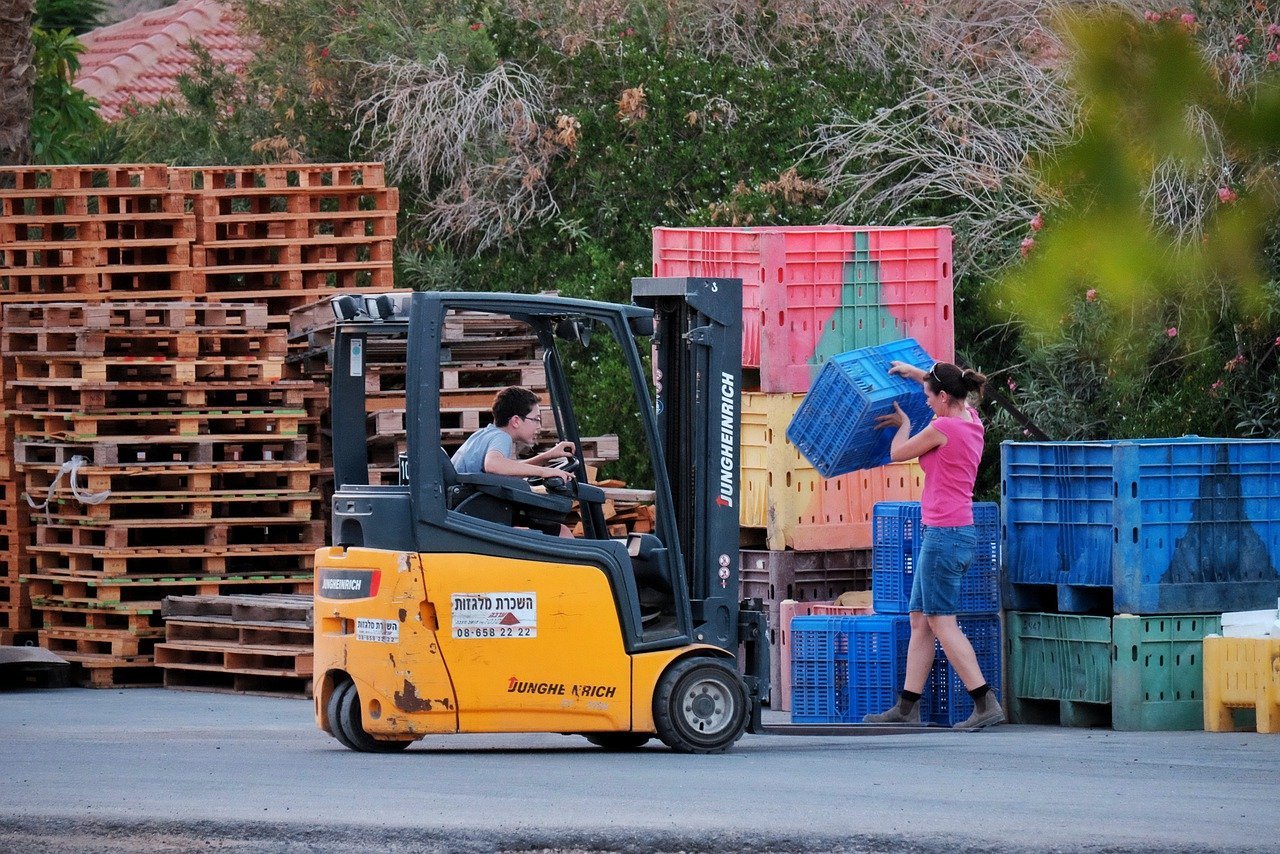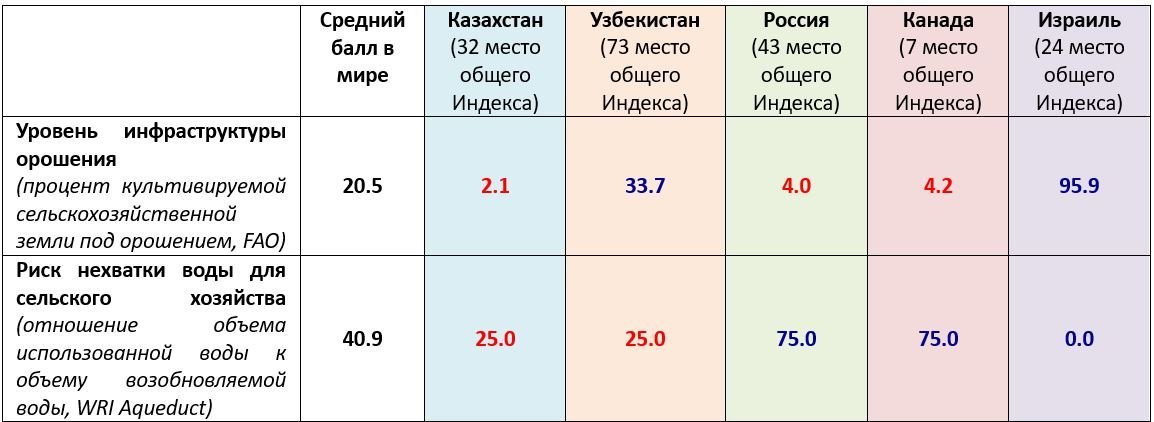Food Security: Where Does Kazakhstan Stand?
 Photo:Pixabay
Photo:Pixabay
Orda.kz looked into Kazakhstan’s food security, on whom it depends, and what needs to be done so that we produce more ourselves.
It is hard to imagine that Kazakhstan with all its potential has issues with food security. Yet there is more to the matter than meets the eye. Food security is also closely linked to the productivity of agriculture in a country. Breaking down the details and delving into the realities of Kazakhstan reveal the full picture.
Food security is an element of the national security. All citizens at any given time should have physical and economic access to sufficient food in quantity, necessary for an active and healthy life. The Rome Declaration on World Food Security (1996) refers to the obligation of any state to ensure every person's right to access healthy and nutritious food in accordance with the right to adequate nutrition and the right to freedom from hunger.
Food security is also one of the main goals of a state's economic and agrarian policy. This is where issues arise for Kazakhstan.
The Economist Impact Analytical Center, which collects, analyzes and predicts various data, has developed a "global food security index". This is a global study and an accompanying ranking of the countries. The assessment is carried out in 113 countries, taking into account a variety of indicators, which are grouped into four large groups.
- Availability and consumption of food – Measures the ability of consumers to buy food, their vulnerability to price shocks, as well as the availability of programs and measures to support consumers in the event of shocks.
- Food availability and sufficiency – Measures agricultural production and on-farm capabilities, the risk of supply disruptions, national food distribution capacity, and research efforts to increase agricultural production.
- Food Quality and Safety – Measures the variety and nutritional value of conventional diets, as well as food safety.
- Resilience and adaptation – Assesses a country's exposure to climate change, its susceptibility to risks associated with natural resources, and how the country adapts to these risks.
The first two points seem to be taken care of, though the remaining ones are a cause for concern.
Firstly, observing the current picture in agriculture, it is clear that we have not learned how to adapt and minimize the risks associated with natural resources. Secondly, on July 28, 2023, an announcement came from the capital that the government recognized the National Project for the Development of the Agro-industrial Complex of the Republic of Kazakhstan for 2021-2025 as void.
To be more precise, it is:
- The concept of development of the agro-industrial complex of the Republic of Kazakhstan for 2021-2030.
- Development plan and operational plan of the Ministry of Agriculture.
Although the deputy chairman of the Board of NCE "Atameken", Yerbol Yeseneyev, believes that business did not notice the adoption of the national project into operation, much less its cancellation.
Problem #1. Management
It all starts with the issue of decision makers’ competence. These endless transformations, the transfer of powers from the Ministry of Agriculture to the Ministry of Ecology and vice versa, the frequent change of leaders. All this does not lead to anything good. First, the water was given to the Ministry of Agriculture’s management, then to the Ministry of Ecology. Therefore, the national project for the development of the agro-industrial complex has been canceled because officials do not need it. Water cannot be compared with oil or with any other resources. And improper management of it leads to the consequences that we are now seeing. Probably, it is necessary to create a separate agency answering to the Prime Minister of the country or the president. The sad thing is that none of the government agencies have clear indicators (KPIs - key performance indicators) by which it would be possible to track performance. They can draw up another five hundred such programs – I'm sure, unfortunately, business will not feel this in any way. The development of the agro-industrial complex, of course, is necessary for Kazakhstan, its citizens, but there must be a sound approach, a reasonable concept, a certain plan for sustainable development and an understanding of what we produce in a year, in 10 years, etc.
 https://pixabay.com/
https://pixabay.com/Problem #2. Dependence on Neighbors
Our total water resources from rivers in an average water year amount to 100.5 km3. Only 56.5 km3 come from the republic’s territory, the rest – 44 km3 - comes from neighboring countries: China – 18.9 km3, Uzbekistan – 14.6 km3; Kyrgyzstan – 3 km3; Russia – 7.5 km3.
Who Is Responsible for "Water Diplomacy"?
Now it is the Ministry of Ecology, the Committee of Water Resources. Although this matter should not apply to them. It also has nothing to do with the Ministry of Agriculture. Perhaps, it is time to create a separate body that would deal with both public policy and negotiation processes. We even have the Foreign Ministry involved in these problems, but on a residual principle. There is no comprehensive strategic approach to how to solve the water problem with all our neighbors. Out of 100 cubic kilometers, half of them flow in from neighbors. It's a risk! And no one really engages in it, says Yerbol Yeseneyev.
What to Do?
There is only one way out - working more actively with problem No. 3, i.e. Kazakhstan's inability to manage existing water resources and water collection.
Due to global warming, moisture exchange processes have changed. Despite the same precipitation with a slightly different distribution along with an increase in temperature, we have already developed a different hydrological regime. It no longer corresponds to our water infrastructure’s operating mode, which was once designed specifically for stationary climate conditions.
This is also one of the main problems despite having floods that we have not learned how to regulate or accumulate. A paradox - flooding with acute water shortage. And all because the conditions of our existing hydro-schemes (water supply systems) do not allow us to work in this way. Restructuring and optimization are required. There are catastrophically not enough new channels and reservoirs.
We also use and manage the water we have very wastefully. Due to the inability to dispose of water, the losses are significant. The efficiency of our existing irrigation systems and channels is less than 0.5.
Yerbol Yeseneyev believes that calls for farmers to use water-saving technologies do not fully reflect the essence of the problem.
 Yerbol Yeseneyev. Photo from the personal archive
Yerbol Yeseneyev. Photo from the personal archiveToday, everyone is talking about the economical use of water when it comes to farmers. But wait! Give them the opportunity to buy an irrigation system. An imported sprinkler system for 100 hectares costs $100,000, and we do not have our own production. No one will be able to afford it either via credit or leasing, solid collateral is needed everywhere for a cost of 300 thousand dollars. I.e. we know the root of the problem, but it needs to be solved. People are ready to farm, but create all the conditions for this. There is still water, and there are bureaucratic obstacles. Not a single agency has systematically approached the issue of water conservation and collection. In spring there is a lot of it, in summer-in autumn there is a shortage. Reservoirs, canals are in a deplorable state.
Returning to the topic of food security, it’s worth noting that, according to most indicators, Kazakhstan does not is not a the bottom of the barrel. But there are two areas where we are far behind. They concern water.
According to the Economist's Global Food Security Index, our indicators have been steadily growing. If in 2021 we had 51.1 points, then in 2022 we have 72.1 points out of 100. However, if we demonstrate good indicators in most areas, then in terms of irrigation infrastructure (percentage of cultivated agricultural land under irrigation, FAO) we score 2.1 points with a global average of 20.5. The risk of water shortage for agriculture (the ratio of the volume of used water to the volume of renewable water, WRI Aqueduct) is 25 points, while the global average is 40.9.
Water indicators in agriculture. Global Food Security Index in 2022
Kazakhstan and the Global Food Security Index in 2022
 Source: https://impact.economist.com/sustainability/project/food-security-index/resource-library
Source: https://impact.economist.com/sustainability/project/food-security-index/resource-libraryThe following question thereby arises: throughout all these years, how have we had we good indicators for availability and consumption of food, availability and sufficiency of food, food quality and safety, if, in terms of infrastructure and water sufficiency for agriculture, we are like one big forgotten desert?
A significant part of agricultural products that appear on our tables are most likely imported. The Bureau of National Statistics' data and Yeseneyev's words confirm this.
Another problem. We produce little domestically. We sold agricultural products in the form of raw materials for 5.6 billion US dollars, and delivered in the form of finished products for 5.8 billion dollars. And they received a negative balance of about 264 million. If we are talking about the potential of agriculture, then hypothetically Kazakhstan can feed a population of 200 million people.The Almaty region alone is able to provide (for -Ed.) the whole of Kazakhstan. However, as already mentioned, in addition to the problems with water, we also have the problem of managing the entirety of this (sector in -Ed.) the economy.
In Israel, deserts cover more than half of the country's area. Meanwhile, the climate and lack of water do not affect farming. However, Israel's water indicators in agriculture are much better than ours. They thereby export agricultural products to a greater extent than they import thanks to their proper water management.
The area of cultivated land in agriculture of the Republic of Kazakhstan decreased by 35% from 1993 to 2020. At the same time, there was a constant decrease in irrigation areas by 64% (from 34,060 thousand hectares to 22,136 thousand hectares). Comparatively, the current area of irrigated land in Israel is only 200 thousand hectares.
 Photo pixabay
Photo pixabaySo, the long-term problem of irrigation of farmland in Kazakhstan can be broken down into 3 main points:
- The country’s Inefficient water infrastructure (78% of channels are not lined);
- Inefficient water consumption in agriculture (lack of necessary irrigation systems suitable for different agricultural crops in order to distribute water economically and evenly);
- Incorrect management of the entire water system of the Republic of Kazakhstan by state bodies (personnel's low qualification, problems of management and division of powers between different departments).
As can be seen, adequate water supply is an indispensable condition for the country's food security. Water is used for irrigation of agricultural crops and strongly influences, for example, the development of animal husbandry in the country, thanks to which, in theory and on paper, we are "able to feed the whole world" with our beef.
Editorial Office Orda.kz will try to look into why the government zeroed out the agro-industrial complex development plan without offering anything worthwhile in return.
Original Author: Daniil Radostovtsev
DISCLAIMER: This is a translated piece. The text has been modified, the content is the same. Please refer to the original piece in Russian for accuracy.
Latest news
- Timur Kulibayev vs. New Kazakhstan: Oligarch Defends His Assets
- MP supported Imam's Statements About Kazakh Traditions
- Altyn Adam: How Filmmakers Quarreled Over Cartoon About Scythian Warrior
- "No Chance": Russian Deserters' Stories in Kazakhstan
- National Fund Earns As Much As It Spends
- What is Going on with FPL Head's Recent Appointment?
- Stati Case: Victory for Kazakhstan?
- Qataris to Spend $3.5 Billion on Construction of Plants in Kashagan
- Oil Quotas: a Blessing or a Curse for Kazakhstan?
- Plant in Kazakhstan: Swiss Investor Purchased, Legal Battle Follows
- Situation with Russian Securities in Kazakhstan Explained
- Uranium Mining Tax in Kazakhstan to Change Starting in 2025
- Chinese Oil Giant to Build Wind Farm in Kazakhstan
- Expert Explains Toqayev Greeting Xi Jinping in Particular Way
- Scandal around "Aria-Zhana Astana", Controlled by Satybaldy, Not Subsiding
- SCO Summit in Astana: What to Expect?
- Who Was Oppositionist Aidos Sadykov?
- KNB Agent Orik VS Financial Police Agent Sanych
- Nazarbayev's Relatives on Trial: Systemic Purge or Political Games?
- Fire in Greece: Luxury Yacht, Kazakhstani Oligarchs' Vacation Scandal


 Source:
Source: